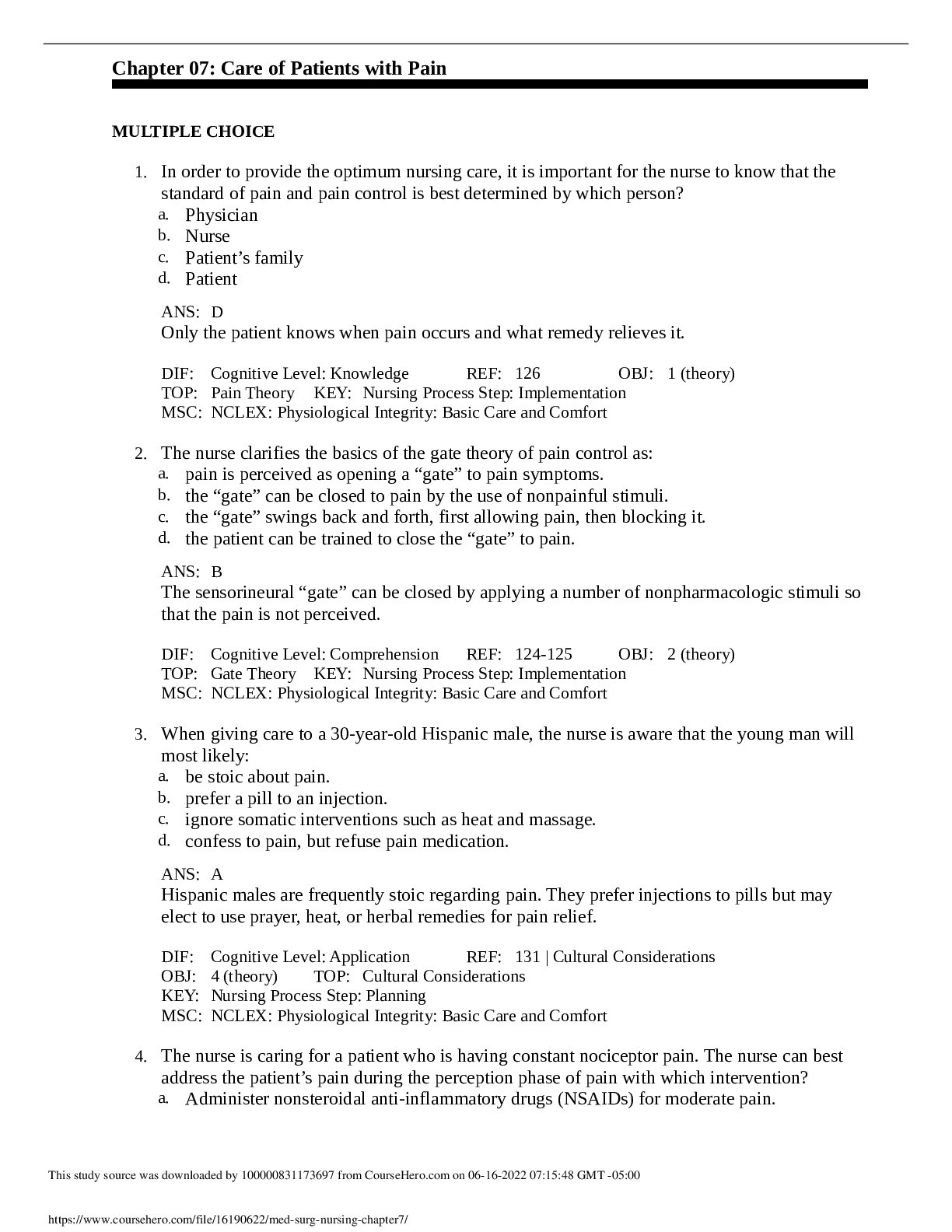All study resources > RNSG 1227med surg nursing chapter7 (Nursing)
RNSG 1227med surg nursing chapter7
1. In order to provide the optimum nursing care, it is important for the nurse to know that the standard of pain and pain control is best determined by which person? a. Physician b. Nurse c. Patient’s family d. Patient 2. The nurse clarifies the basics of the gate theory of pain control as: a. pain is perceived as opening a “gate” to pain symptoms. b. the “gate” can be closed t ...[Show More]
Preview 1 out of 9 pages
Purchase now to view full document
Document details
Subject:
Nursing
Category:
Questions and Answers
Number of pages:
9
Language:
English
Last Update:
3 years ago
